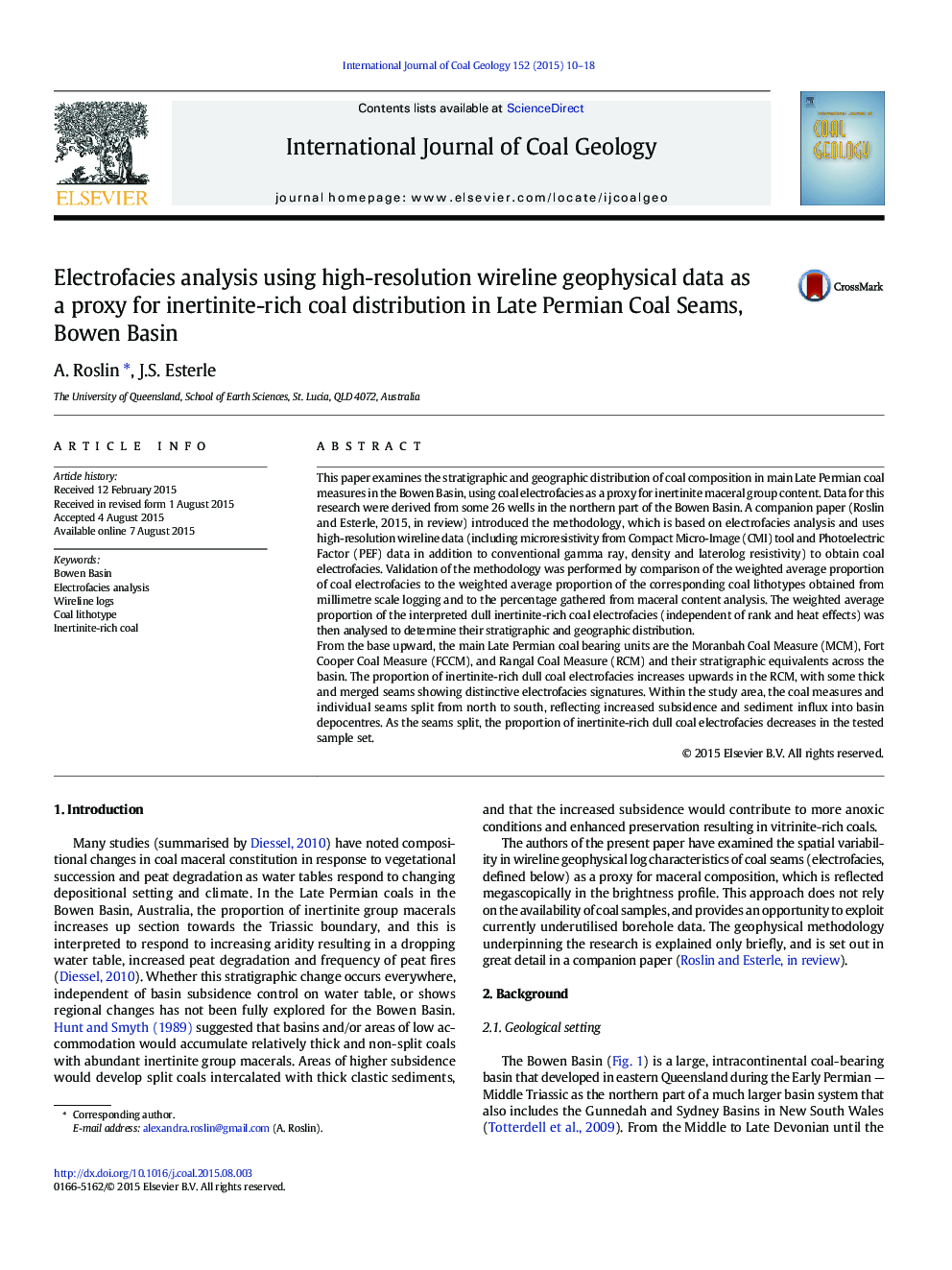| Article ID | Journal | Published Year | Pages | File Type |
|---|---|---|---|---|
| 1752879 | International Journal of Coal Geology | 2015 | 9 Pages |
•The “dullness” of coal increases towards the top of the Late Permian Coal Measures.•The “dullness” of coal increases from the south to the north.•The inertinite-rich dull coal increases towards the top of Rangal Coal Measures.•Stratigraphic distribution is caused by global climate changes.•Increase of inertinite-rich coal towards the south is caused by tectonic subsidence.
This paper examines the stratigraphic and geographic distribution of coal composition in main Late Permian coal measures in the Bowen Basin, using coal electrofacies as a proxy for inertinite maceral group content. Data for this research were derived from some 26 wells in the northern part of the Bowen Basin. A companion paper (Roslin and Esterle, 2015, in review) introduced the methodology, which is based on electrofacies analysis and uses high-resolution wireline data (including microresistivity from Compact Micro-Image (CMI) tool and Photoelectric Factor (PEF) data in addition to conventional gamma ray, density and laterolog resistivity) to obtain coal electrofacies. Validation of the methodology was performed by comparison of the weighted average proportion of coal electrofacies to the weighted average proportion of the corresponding coal lithotypes obtained from millimetre scale logging and to the percentage gathered from maceral content analysis. The weighted average proportion of the interpreted dull inertinite-rich coal electrofacies (independent of rank and heat effects) was then analysed to determine their stratigraphic and geographic distribution.From the base upward, the main Late Permian coal bearing units are the Moranbah Coal Measure (MCM), Fort Cooper Coal Measure (FCCM), and Rangal Coal Measure (RCM) and their stratigraphic equivalents across the basin. The proportion of inertinite-rich dull coal electrofacies increases upwards in the RCM, with some thick and merged seams showing distinctive electrofacies signatures. Within the study area, the coal measures and individual seams split from north to south, reflecting increased subsidence and sediment influx into basin depocentres. As the seams split, the proportion of inertinite-rich dull coal electrofacies decreases in the tested sample set.
